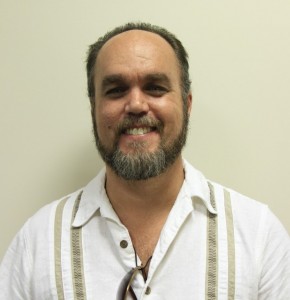
John Lash
For James Burns solitary confinement began when he was six years old. As he writes in a recent ACLU article, “They restrained me, they yanked down my pants, and they gave me a shot. It knocked me out. I woke up hours later, very confused. I did not know where I was or where my mom was and I was in so much pain. I start screaming and crying and kicking the door. They came back in and restrained me. It happened over and over again, for what felt like days.”
This was in a hospital in Colorado where his mother, unable to care for him, turned him over. While not technically solitary, James’ experience of institutional use of restraint and isolation went on for two weeks or so, and unfortunately isn’t uncommon, whether kids are in custody for protection, treatment or delinquency.
In his case the experience was one of many he endured as he embarked on a career of various illicit activities, including gang activity and crimes that saw him finally land in adult prison while still a teenager. This month saw the release of a movie telling Burns’ story, Jamesy Boy. The film covers his involvement with gangs and his five year stint in prison. A long term older prisoner was one of the people that helped him get his life together and think about the choices he was making. Unlike many youngsters who become involved in the system at an early age, James was able to shift his thinking and actions.
After his release Burns worked hard to stay straight. He got an education. He became a writer, poet and film maker, and has contributed many of his efforts to changing the conditions of detention for kids, including joining in the ACLU’s effort to end solitary confinement.
A significant number of the nearly 100,000 youth being detained face this punishment, and the results are not good. Psychologically and developmentally it isn’t a good idea to isolate children. The problem is exacerbated when the kid has behavioral issues, as so many who are involved with the juvenile justice system do. Beside contact with peers the punishment often prevents adequate visits with family and other loved ones on the outside. Kids also need proper food and exercise, and both of these are often lacking in the world of solitary confinement. Some studies have shown that kids in solitary experience low weight and stunted growth.
James is unfortunately the exception. He still suffers some of the consequences of his time in prison and in solitary, but largely he has recovered and is in fact thriving. For most kids the results aren’t as promising. Many suffer from PTSD and other psychological issues. It is, as James writes, a form of torture that needs to stop, and he is doing his part to bring about change.
Very important op-ed. This is also why the current work of advocates in New Jersey is so important who are trying to codify restrictions on how segregation can be used on juveniles. (Here’s an article about their work: http://www.aclu-nj.org/news/category/prisons) One of the things we don’t fully know–but can reasonably assume–is that while it is proven that prolonged periods of segregation can have profoundly deleterious effects on adults, it likely is worse for young people whose brains are developing. The reason we don’t fully know the answer to this is that ethical standards that govern research prohibit experiments that would give us a more definitive answer–and yet, this is standard practice in many juvenile correctional systems.